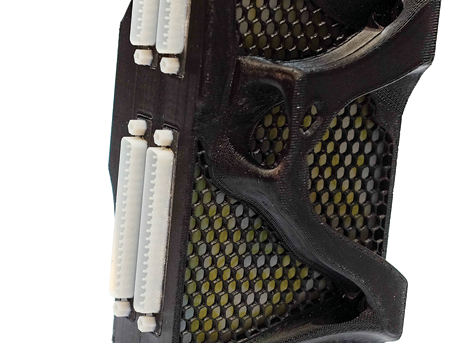
This 3D printed avionics box can dissipate electrical charge buildup without relying on post-processing steps due to the ESD PEKK material
Advanced electronics applications, like those launched on an orbiting satellite, require strong, lightweight materials with Electrostatic Dissipative (ESD) qualities.
Once a satellite is launched, there is no way to fix something that breaks, driving the need for incredibly high reliability in an extreme environment where temperatures can range from -150°C to +150°C within an hour, with no air flow, and electrostatic charges can build up very quickly.
An electrostatic discharge can damage or destroy the sensitive electronics required to operate the satellite, leaving a very expensive piece of space trash behind, hence Stratasys’ Advanced Materials lab has solved the problem by creating the ESD PEKK, a FDM thermoplastic.

Without the need for post processing, the design can be any shape, a bonus for aerospace where 3D printed structures like this save valuable weight
The Advanced Materials lab worked closely with a launch vehicle to engineer the custom materials – in this case the thermoplastic dissipative polyetherketoneketone material ABS-ESD7 melded with the Ultem 9085 strength, thermal properties, and the chemical resistance of the PEKK base resin.
To dissipate electrostatic charge buildup and prevent damage to components, the space and electronics industries typically turn to post-processing methods such as coating, painting, and covering with conductive tape to meet ESD properties when using thermoplastics.
ESD PEKK’s conductive filler is designed to eliminate the time and expense of additional post-processing steps and allows the part to be used right out of the printer. Additionally, its superior tensile strength and resistance to chemicals and high temperatures offers stability for production parts operating in extreme environments.
A custom material, ESD PEKK is not available through traditional Stratasys sales channels, only via Stratasys Advanced Materials on custom order for Fortus 3D machines.






